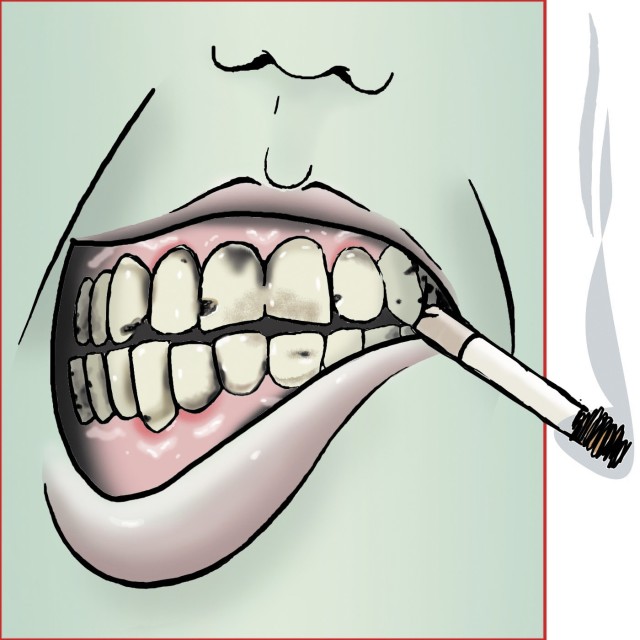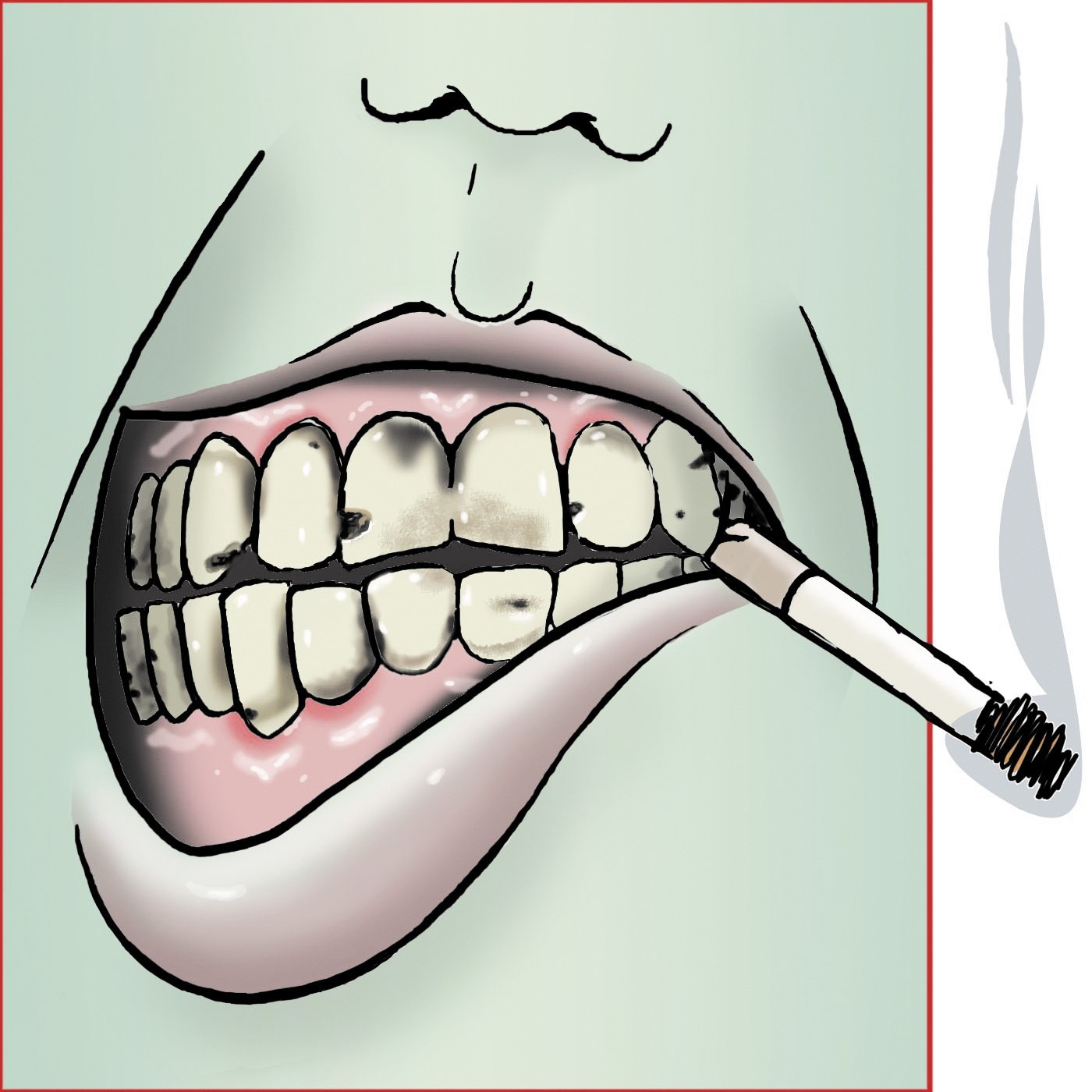APG News
Most people know that smoking can cause heart disease, stroke, lung cancer or other respiratory diseases. But many don't know that smoking causes tooth decay and gum disease.
Drinking beverages like sports drinks or soda and eating sugary, starchy foods are not the only culprits. Smoking affects the whole mouth-teeth and gums. Besides decay, it can lead to oral cancer.
Smoking contributes to tooth decay and gum loss. It compromises the flow, amount and function of saliva in the mouth. Saliva is important for cleaning the lining of the mouth and teeth. The flow of saliva helps to counteract mouth acids that cause decay and protects the teeth from wearing away. The calcium in saliva helps to prevent tooth decay. The calcium remineralizes (hardens) the surfaces of the teeth.
Studies show that smokers tend to have more tooth decay than nonsmokers. Some studies show that children who are raised in households where one or both adults smoke are more likely to develop tooth decay because of mouth, breathing and respiratory infections.
Smoking can cause gum disease, which leads to tooth loss. Smoking reduces blood flow to the gums and cuts the supply of vital nutrients. It can also reduce the vitamin C levels needed to maintain healthy gums. It causes receding gums. The gums wear away; the teeth become loose and fall out. The tooth roots are exposed, which also increases the risk of tooth decay. These two factors-reduced blood flow and vitamin C levels-make attempts to treat gum disease in smokers less likely to succeed.
Smoking also raises the mouth's temperature, damaging and killing important cells and tissues in the mouth. The combination of high mouth temperature and cancer-causing compounds found in cigarettes (and cigars) can cause oral cancer, cancer of the mouth.
Smokers are two to 18 times more likely to develop oral cancer than nonsmokers. It depends on how heavily they smoke. Oral cancer strikes more Americans annually than some better-known cancers such as brain, thyroid, stomach, cervical and ovarian cancer. From 1997 to 2006, there were 110 cases of oral cancer among Department of Defense service members ages 20 to 24. For DoD service members over 40, oral cancer ranged from 116 to 122 cases per year.
The overall survival rate for oral cancer is low-nearly half of all oral cancer patients die within five years. More than half of all oral cancer cases are not detected until they reach an advanced stage. Early warning signs of oral cancer include:
A swelling, lump or growth in the mouth that does not heal.
White or red patches inside the mouth that don't go away.
Loose teeth for no apparent reason.
Pain when swallowing.
Persistent sore throat.
Difficulty swallowing or in opening your mouth.
A nagging cough or persistent hoarseness.
Unusual bleeding in your nose or mouth.
Numbness or tingling in your lips or tongue.
Getting an oral cancer examination at your annual dental visit is a way to screen for the risk of oral cancer.
As a Soldier, it is very important to maintain good oral hygiene in the field to prevent tooth decay and gum disease. A Soldier's risk of tooth decay increases in the field. Rations have a high amount of starch and sugar which bacteria use to produce acids that cause tooth decay.
A person's best defense against tooth decay and oral cancer is to stop smoking. Practice good hygiene by flossing and brushing daily. Perform an oral cancer self-exam every month if you are at risk for oral cancer.
For more information on preventing tooth decay and improving oral health, visit these Web sites:
CHPPM Oral Fitness Program, http://chppmwww.apgea.army.mil/dhpw/OralFitnessMain.aspx
The American Dental Association, www.ada.org
The American Cancer Society, http://www.cancer.org/


Social Sharing